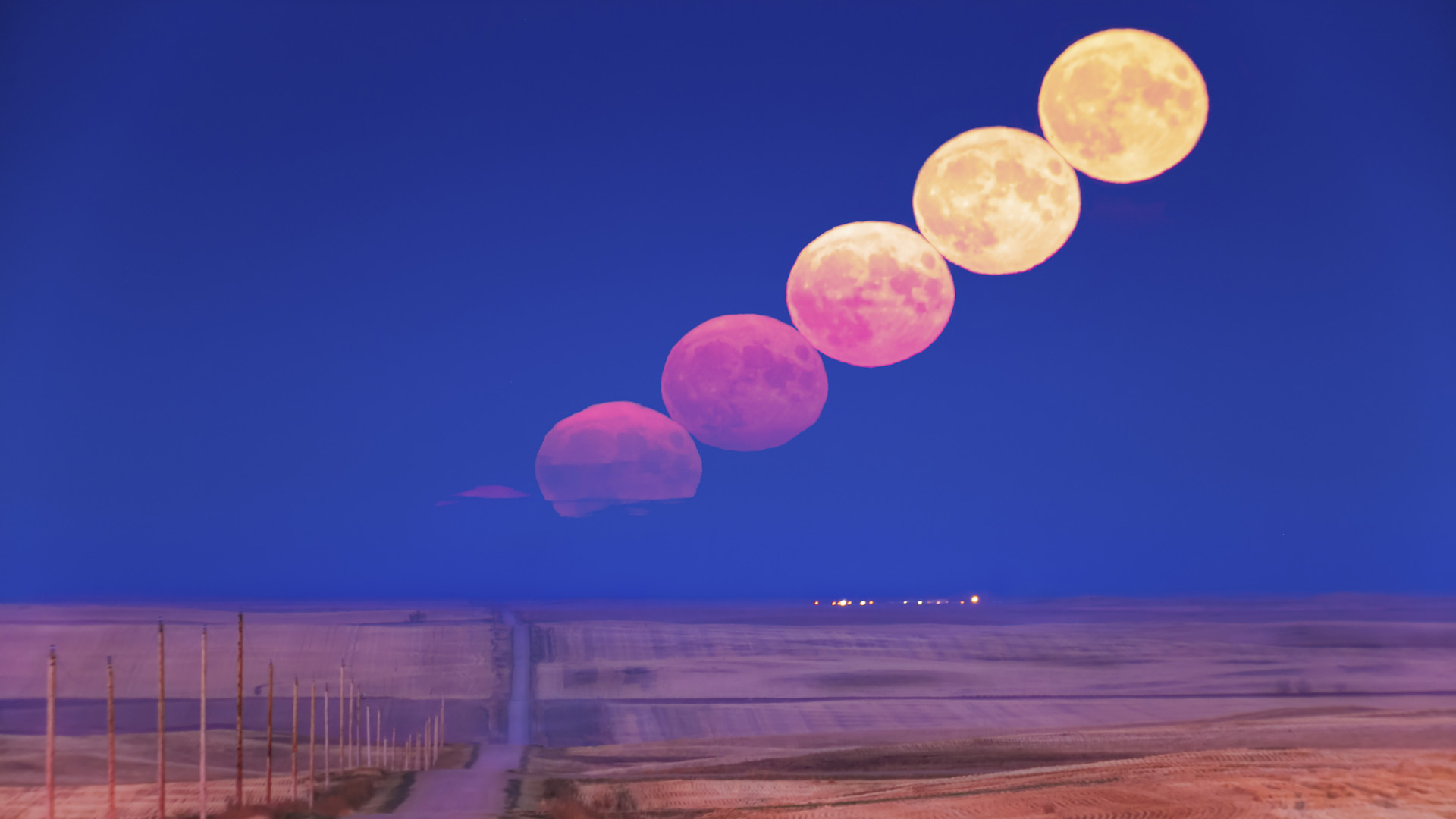The 1st 'major lunar standstill' in more than 18 years is about to occur. Here's how to see it.
A major lunar standstill is about to occur. The phenomenon happens every 18.6 years when the moon rises and sets at its most extreme points on the horizon, while also climbing to its highest and lowest point in the sky.

In addition to the April 8 total solar eclipse and vibrant displays of auroras, there's another celestial treat for skywatchers this year: the first "major lunar standstill" since 2006. During this event, the moon rises and sets at its most extreme northerly and southerly positions on the horizon, reaching its highest and lowest points in the 18.6-year lunar cycle.
This is possible because the moon doesn't follow the same path as the sun. Its rising and setting positions on the horizon change constantly due to the movements of Earth and the moon. The solar system is flat, with the planets orbiting the sun on the same plane, known as the ecliptic. Earth rotates on an axis tilted by 23.4 degrees with respect to this ecliptic, causing the sun to rise and set within almost 47 degrees — a range it gradually covers over an entire year. The moon's orbit is tilted by 5.1 degrees relative to the ecliptic, allowing it to rise and set within a 57-degree range in any given month.
This explains why the moon can sometimes rise and set at points on the horizon farther north and south than the sun can.
A major lunar standstill, or lunistice, occurs when the tilts of both Earth and the moon are at their maximum. During this period, the moon rises and sets at the extremes of its range. It rises at its very highest northeasterly point and sets at its very highest northwesterly point. During this period, it also rises at its most southeasterly point and sets at its most southwesterly point.
The major lunar standstill significantly affects how long the moon is in the sky at night. A moon rising farthest northeast in the Northern Hemisphere climbs higher into the sky and stays in the sky longer. It shines in a noticeably different position than during a minor lunar standstill, when the range of where it rises and sets is at its narrowest. Historical sites such as Stonehenge, Callanish and Newgrange appear to be aligned with moonrise and moonset points during a major lunar standstill, indicating the celestial event’s past importance.
Related: Daytime moon: Why can we sometimes see the moon in broad daylight?
This major lunar standstill will be at its most extreme around the equinoxes in September 2024 and March 2025. However, visibility depends on the moon's phase, your location and the weather. Good times to look include when the moon rises and the sun sets, and vice versa, during a full moon.
Sign up for the Live Science daily newsletter now
Get the world’s most fascinating discoveries delivered straight to your inbox.
On June 21, the sun will rise and set at its most northeasterly and northwesterly points, while the full Strawberry Moon will rise and set at its most southeasterly and southwesterly points. Conversely, on Dec. 15, the sun will rise and set at its most southeasterly and southwesterly points, while the full Cold Moon will rise and set at its most northwesterly and northeasterly points.
To observe these phenomena, watch from exactly the same location, and you'll notice a big difference. A pair of stargazing binoculars or a good backyard telescope aren't necessary to notice the effect, but they may help you zoom in on Earth's fully-illuminated satellite to get the most out of your lunar skywatching.

Jamie Carter is a freelance journalist and regular Live Science contributor based in Cardiff, U.K. He is the author of A Stargazing Program For Beginners and lectures on astronomy and the natural world. Jamie regularly writes for Space.com, TechRadar.com, Forbes Science, BBC Wildlife magazine and Scientific American, and many others. He edits WhenIsTheNextEclipse.com.









